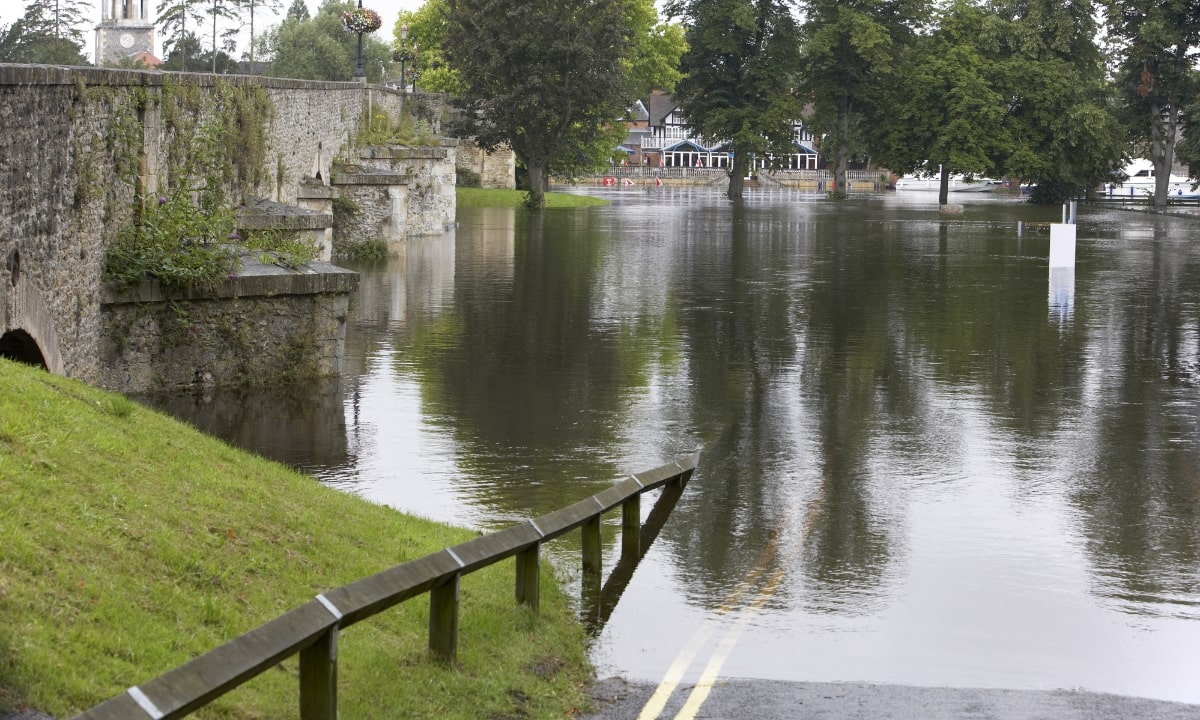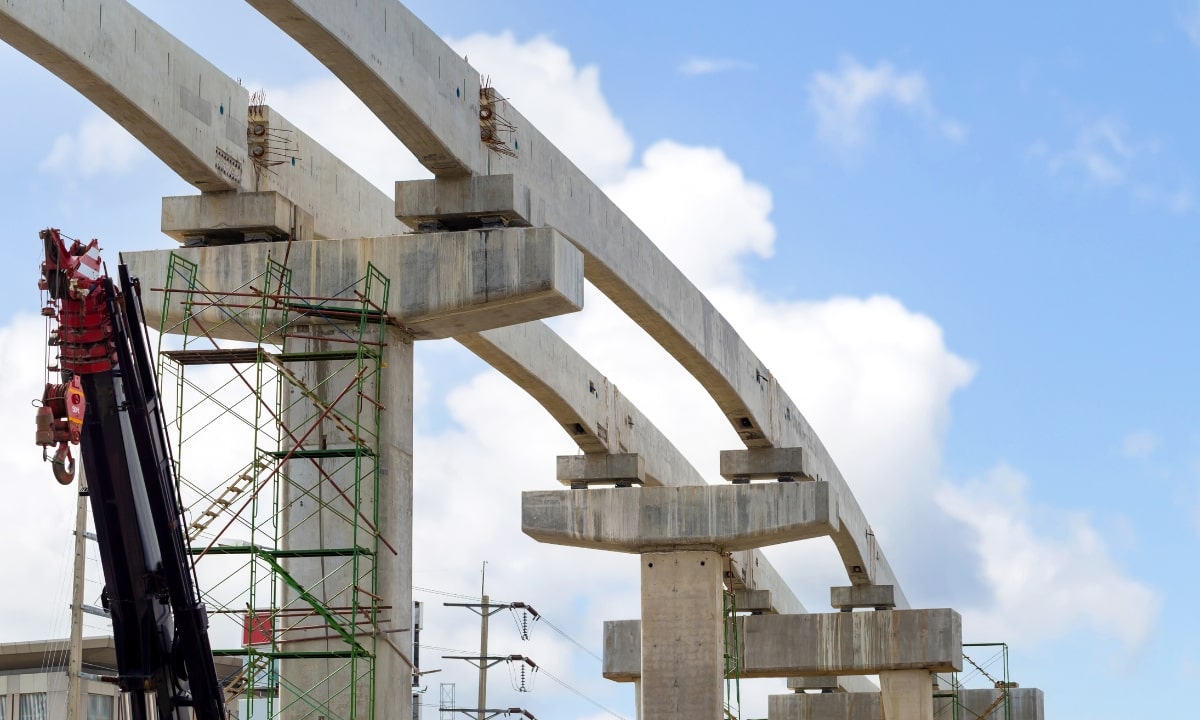Transportation infrastructure forms the arteries of our society, enabling the flow of goods, people, and vital services. However, these arteries are said to be increasingly threatened by a formidable foe: climate change.
According to many researchers and environmentalists, rising temperatures, intense precipitation, and more frequent extreme weather events are placing immense strain on highway bridges, posing significant risks to their stability and safety.
While there remains some controversy and unanswered questions concerning climate change, it is essential to understand the multifaceted impact climate change may have on highway bridges and how under-bridge engineers, contractors, and inspectors can play a crucial role in mitigating these challenges.

Facing the Flood: Climate Change Threats to Bridges
Climate change manifests in several ways, each posing unique threats to bridges in the future:
- Increased Flooding: More frequent and intense precipitation events lead to rising water levels in rivers and streams, putting bridges at risk of scour, a process where flowing water erodes the foundation, weakening the structure. Coastal bridges face additional hazards from storm surges and sea level rise, potentially exceeding their design capacity.
- Extreme Temperatures: Higher average temperatures cause thermal expansion and contraction, stressing bridge materials and potentially leading to cracks and failure. Additionally, heatwaves can soften asphalt, impacting pavement integrity and bridge joints.
- Wildfires and Landslides: Climate change contributes to increased fire risk and heavier precipitation, both of which can trigger landslides. Wildfires can weaken bridge supports and damage structural components, while landslides can block vital access routes and destabilize bridge foundations.
These threats translate into real-world consequences including bridge closures and disruptions. Damaged bridges, for example, lead to closures, disrupting traffic flow and impacting emergency response times. In 2021 alone, the American Road & Transportation Builders Association reported that over 47,000 U.S. bridges were deemed structurally deficient, highlighting the widespread vulnerability.
There are also economic costs to consider. The cost of repairing and replacing damaged bridges is significant. In fact, the Federal Highway Administration estimates a $176 billion backlog of bridge repair needs in the U.S. alone.
Then there are the safety risks that stem from damaged and unsafe bridges. Bridge failures can have tragic consequences. The National Transportation Safety Board reported 583 bridge-related fatalities in the U.S. between 2016 and 2020, emphasizing the need for proactive interventions.
Under Bridge Solutions: Responding to the Challenge
The American Society of Civil Engineers (ASCE) has issued a policy statement detailing their proposed response to this perceived challenge. Their statement says in part,
“There is an immediate need for engineers to incorporate resilience to future climate changes into project design criteria. Unfortunately, current practices and rules governing such design criteria do not adequately address concerns associated with climate change. Current engineering design standards, codes, regulations, and associated laws that govern infrastructure are generally not structured to allow design adaptation to address climate change.”
Given these challenges, what role can under bridge platform rental companies play? Fortunately, the versatility and accessibility of your services offer valuable solutions:
- Faster Inspections and Repairs: When bridges require inspection or repair following extreme weather events, under bridge platforms provide safe and efficient access for crews. This minimizes road closures and expedites essential work, helping communities regain critical transportation links.
- Damage Assessment and Monitoring: Your platforms can facilitate detailed inspections of structural damage caused by flooding, fire, or other climate-related events. This information is crucial for assessing repair needs and prioritizing bridge maintenance projects.
- Construction and Rehabilitation: Under bridge platforms provide a stable and elevated work surface for bridge rehabilitation and construction projects. This is particularly relevant when dealing with bridges over waterways or vulnerable areas, where traditional scaffolding might be impractical.
- Cost-Effectiveness: Compared to traditional methods, renting under bridge platforms can be a more cost-effective solution for inspections, repairs, and construction projects, especially considering the potential economic burdens of delayed maintenance and repairs.
Building Resilience: Looking Ahead
The impact of climate change on highway bridges is a complex and evolving challenge. However, by working together and utilizing innovative solutions like under bridge platforms, we can build more resilient infrastructure. This requires:
- Increased Investment: Addressing the backlog of bridge repairs and incorporating climate-resilient design features requires increased investment in infrastructure. Public-private partnerships and innovative financing mechanisms can play a crucial role in securing these funds.
- Data-Driven Decisions: Utilizing data on past climate events and future projections can help prioritize vulnerable bridges and guide preventive maintenance efforts.
- Collaboration and Innovation: Collaboration between government agencies, engineering firms, construction companies, and under bridge platform providers is crucial for developing and implementing effective solutions.
By proactively addressing the threats posed by climate change, we can ensure the safety and functionality of our vital transportation infrastructure, safeguarding lives and livelihoods while fostering a more resilient future. Under bridge platform rental companies, with their adaptable and cost-effective solutions, stand as valuable partners in this endeavor.

The Future of Building Bridges: Beyond Concrete and Steel
The health of our transportation infrastructure and highway bridges isn’t just a mechanical issue. It’s also a condition that may be directly impacted by the vagaries of climate change. From engineers crafting innovative solutions to policymakers prioritizing infrastructure needs, and even communities raising their voices for resilient transportation, we all can have a part to play in securing a strong future for our bridges.
An article published at Taylor & Francis Online noted that,
“Climate change may have multifaceted impacts on the safety and performance of infrastructure. Accounting for the different ways in which potential climate change scenarios can affect our infrastructure is paramount in determining appropriate adaptation and risk management strategies. Despite gaining some attention among researchers in recent years, this research area is still largely uninvestigated. Several studies have indicated bridges to be especially susceptible to the effects of climate change.”
By understanding the challenges posed by climate change and embracing innovative solutions like under bridge platforms, we can ensure timely inspections, efficient repairs, and ultimately, safe passage for generations to come.
Join us at Under Bridge Platforms as we help navigate the evolving landscape of highway bridge repair, maintenance, and inspections. We offer state-of-the-art equipment like the A-40 Bridge Inspection Unit and the DFM Bridgemaster-Art-B-4, providing unmatched access and efficiency for bridge inspection and repair projects. Our commitment to quality and customer service ensures your projects run smoothly and safely.
Ready to be part of the solution?
Contact us today at 707-528-0373 or [email protected] to discuss your specific needs and how we can help you build stronger bridges for a brighter future.


Recent Comments